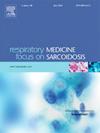Factors associated with short- and medium-term mortality after hospitalization for COPD exacerbation
IF 3.5
3区 医学
Q2 CARDIAC & CARDIOVASCULAR SYSTEMS
引用次数: 0
Abstract
Objective
Hospitalization due to exacerbation is a critical event for patients with chronic obstructive pulmonary disease (COPD). This study aimed to identify predictive factors for mortality in patients post-hospitalization for COPD exacerbation and to determine differences in these predictors in the short and medium term.
Methods
A prospective observational study involving 1635 patients hospitalized for COPD exacerbation, followed for one year. Sociodemographic and clinical data, comorbidities, treatments, and quality of life questionnaires were assessed. Cox regression analysis identified mortality predictors at 2 months and >2–12 months post-hospitalization.
Results
Mean age was 72.4 years with 76.6 % males. Overall, one-year mortality was 14.1 % (30.3 % of the deaths occurred within 2 months of discharge and 69.7 % occurred >2–12 months post-discharge). Short-term mortality predictors included: age (HR [95 % CI] = 2.483 [1.501–4.107]), lower Barthel index (HR [95 % CI] = 1.274 [1.063–1.526]), pulmonary function (FEV1 < 30 %: HR [95 % CI] = 5.153 [1.511–17.577]), and length of stay ≥8 days (HR [95 % CI] = 6.974 [2.504–19.419]). Medium-term predictors included: heart failure (HR [95 % CI] = 2.493 [1.318–4.717]), age (HR [95 % CI] = 1.690 [1.224–2.334]), lower Barthel index (HR [95 % CI] = 1.300 [1.149–1.472]), and pulmonary function (FEV1 < 30 %: HR [95 % CI] = 3.000 [1.351–6.658] and FEV1 30–50 %: HR [95 % CI] = 2.010 [1.046–3.862]).
Conclusions
Mortality risk factors with exacerbated COPD after hospitalization vary over time. In the short term, length of hospital stay is prominent, while heart failure is more significant in the medium term. Age, dependency and pulmonary function were common predictors in both periods. Tailoring clinical interventions over time may improve health outcomes in this population.
求助全文
约1分钟内获得全文
求助全文
来源期刊

Respiratory medicine
医学-呼吸系统
CiteScore
7.50
自引率
0.00%
发文量
199
审稿时长
38 days
期刊介绍:
Respiratory Medicine is an internationally-renowned journal devoted to the rapid publication of clinically-relevant respiratory medicine research. It combines cutting-edge original research with state-of-the-art reviews dealing with all aspects of respiratory diseases and therapeutic interventions. Topics include adult and paediatric medicine, epidemiology, immunology and cell biology, physiology, occupational disorders, and the role of allergens and pollutants.
Respiratory Medicine is increasingly the journal of choice for publication of phased trial work, commenting on effectiveness, dosage and methods of action.
 求助内容:
求助内容: 应助结果提醒方式:
应助结果提醒方式:


